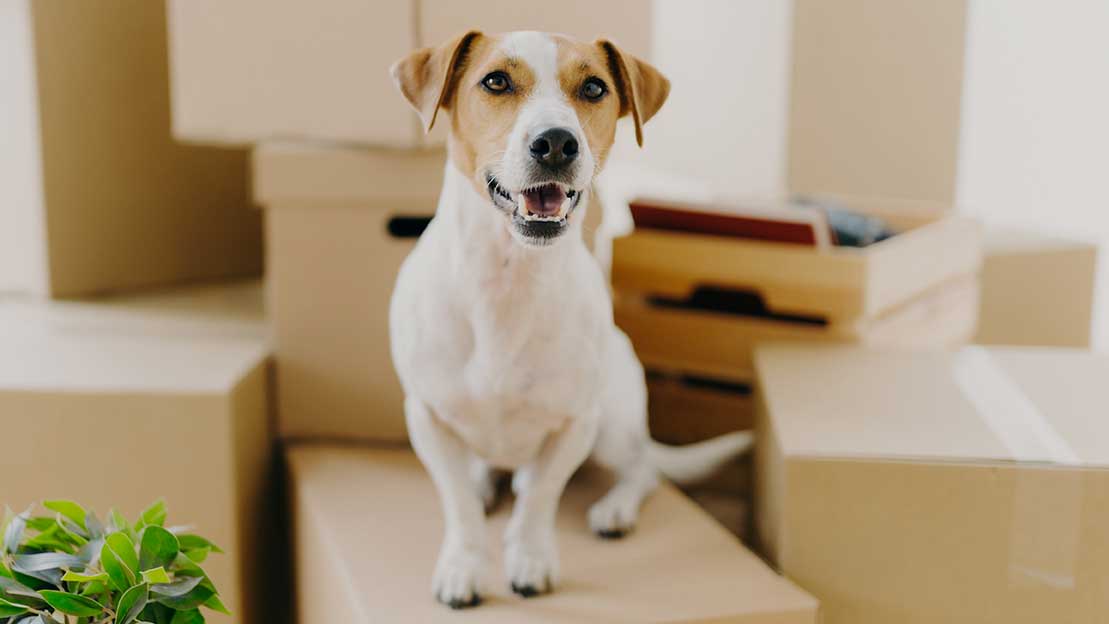Some people consider moving more stressful than planning a wedding, going to the dentist, or even spending a week in jail! It can be an anxious time for everyone involved — including our four-legged friends.
Think about moving from your pet’s point of view. Suddenly there are strangers coming in and out of the house. Their favorite items are being moved or may even disappear into big brown boxes. And the noise! The sound of tape guns, people talking, and furniture being moved can be positively terrifying for a pet.
At Peace of Mind Transitions, we’ve had to coax anxious cats from under beds and out of the deep recesses of closets. We’ve packed with the accompaniment of a parrot whistling the first three bars of Amazing Grace for four hours. (Our team ended up just as stressed as the bird!) And, we’ve worked with many sweet dogs who’ve just wanted to find a safe space to get away from all the noise.
Moving is never easy, even for people who understand the transition. The process can be even harder on pets, who don’t understand what is going on.
Here are some tips for helping your pet adjust before, during, and after a move:
Discuss the move with your vet.
Talk to your vet prior to the move. Will you need a referral to a vet in your new location? Will your pet need some anti-anxiety medication? Consider having a copy of your pet’s medical records on hand so that your transition to a new vet is seamless.
Remove your pet from the chaos.
Consider removing your pet from the chaos of packing and moving by having them stay with family or friends or even boarding at a kennel.
Let your pet get familiar with the new home beforehand.
If possible, take your pet to visit the new space before the move. It will give them time to familiarize themselves and will alleviate stress.
Create a familiar space for your pet.
Just like it helps humans to setup their space in a familiar way after a move, try to set up your pet’s “space” in a familiar way as well. Maybe your dog likes having her bed by the window or your cat likes to have his scratching post in the living room. Keeping these familiar features will help your pet understand that the new place is home.
Try to keep your pet’s routine as normal as possible.
Animals also appreciate a routine. Keep a similar feeding schedule and walking routine to help your pet adjust to the new location. If you have a dog, consider walking the same route for the first few days to get used to the new neighborhood.
Give your pet time to adjust.
After you move, remember that it’s going to take some time to adjust. You may need to walk your dog more often. Your cat may be more standoffish than usual. Just give them lots of love and reassurance.
Moving is never easy, even for people who understand the transition. The process can be even harder on pets, who don’t understand what is going on. Hopefully, with these tips, you can reduce your pet’s stress during the move and make the process as seamless as possible!




